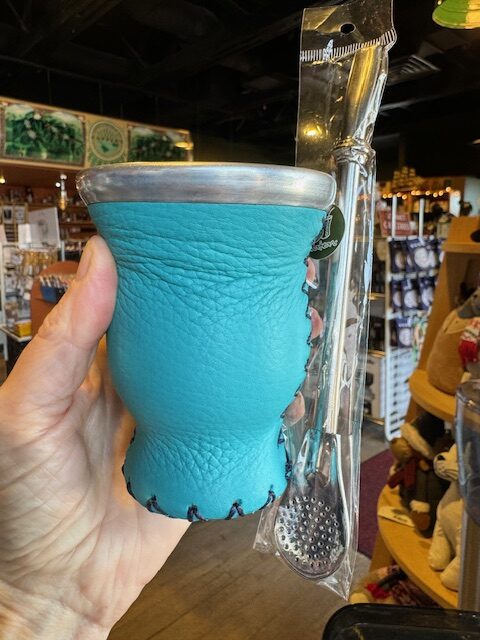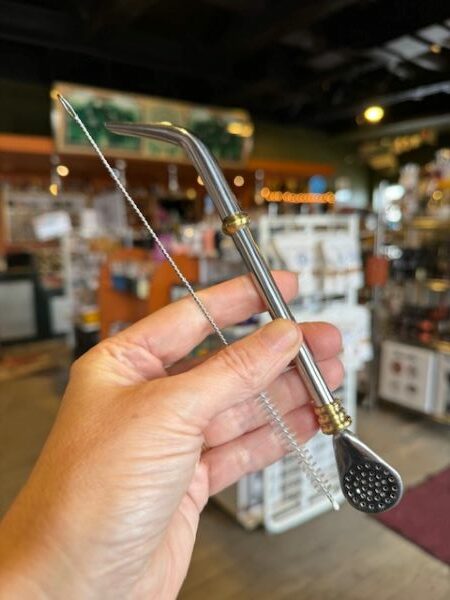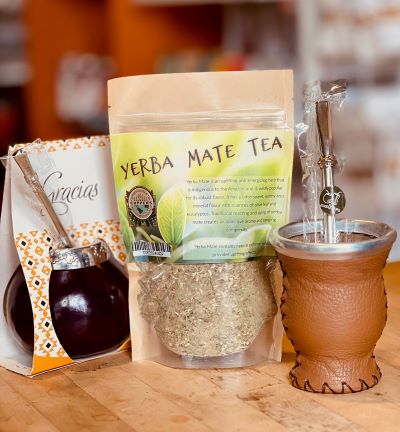Brewing yerba mate is part of a traditional, well-loved South American beverage. It holds cultural significance, to be consumed daily with family and friends.

Yerba mate is a traditional South American beverage. The correct pronunciation of the drink is “Yehr·buh maa·tay”. Yerba refers to the herb, while mate is the gourd used to drink the tea.
The yerba mate plant is native to the subtropical forests of South America. It’s found in regions of Paraguay, Argentina, Uruguay, and Brazil. The drink has a long history, dating back to the indigenous Guaraní people. They used it for its stimulating properties and as a social ritual. It was adopted by the Jesuits who came to the area in the 1600-1700’s… and traveled from there.
Yerba mate made by steeping the dried leaves and stems of the Ilex paraguariensis plant in hot water. As it’s not made from true tea leaves but from Paraguayan holly, yerba is actually a tisane. In Argentina, Uruguay, Paraguay, and parts of Brazil, yerba mate is a social beverage. It holds cultural significance and consumed daily with family and friends.
Brewing Yerba Mate
Items Needed to Make Yerba Mate
There are many different ways to brew yerba mate. Most of the differences are cultural, as each area and culture that drinks it has their standard process. We’re going to review common methods and materials used in brewing yerba mate.
Before making your yerba mate, you’ll need:
Mate gourd or vessel. The traditional “Mate” or “Cuia” is a hollowed out gourd with a metal rim. A small cup or mug also works. Other styles include glass containers with a fabric or leather outer layer.
Bombilla. This is a metal straw with a spoon-like filter at the bottom, used to drink mate. It allows you to drink the infused tisane without any leaves.
Yerba mate leaves. Like most teas, yerba mate arrives packaged in bags or loose form. Often they are a combination of leaf fragments and stems, both of which help in the brewing.
Hot water. The temperature of the water when brewing yerba mate is crucial. It needs to be near, but not at boiling. This extracts the flavors and nutrients from the leaves without burning them.
Optional additions:
Sweetener: Some people prefer to add sugar or honey to sweeten their yerba mate.
Herbs or flavours: Some variations of yerba mate have added herbs or flavors, such as mint or citrus.
Milk or cream: Some individuals enjoy adding milk or cream to their mate, like tea or coffee.
We have several different gourd colours and styles at Cupper’s Coffee and Tea. And if you want a different bombilla, we have those too!
If you choose a natural gourd mate, you’ll need to cure it before using it for the first time. Check out our instructions on How To Cure A Yerba Mate.
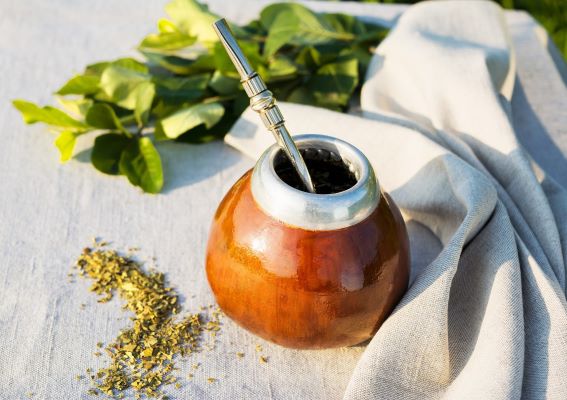
Brewing a Mate
Fill the gourd (or cup) with yerba mate leaves, to about two-thirds of the way full.
Tilt the gourd to one side and gently tap it to settle the leaves. The larger stem bits come to the surface, which helps keep the tea down. The tapping create a slight slope in the mate.
Insert the bombilla into the yerba mate, positioning it near the bottom of the gourd.
Pour hot water (not boiling) into the gourd, filling it to the top.
Allow the yerba mate to steep for a few minutes, then sip through the bombilla. Refill with hot water as needed for more servings.
Benefits of Yerba Mate
Yerba mate tastes great and the social aspects are part of the wonderful tradition. As a bonus, there are a host of documented health benefits to drinking yerba mate too!
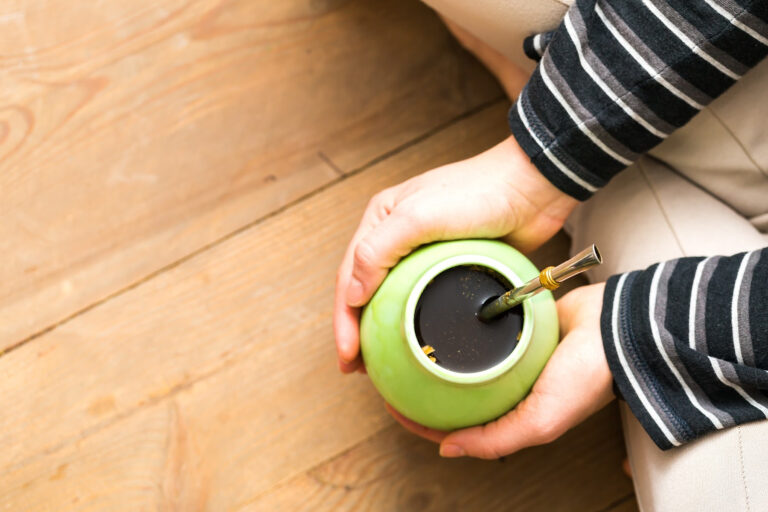
1. Energy boost, improved focus and mental clarity
Yerba mate contains caffeine, much like coffee and black tea. Unlike those, it also contains theobromine and theophylline. These contribute to a smoother, more sustained energy boost without the jitters.
2. Nutritional Bonus
Yerba mate is rich in vitamins, minerals, and antioxidants. These include vitamins A, C, and E, and various B vitamins. It also contains calcium, manganese, iron, potassium, and zinc.
3. Antioxidant properties
Yerba mate is high in antioxidants, particularly polyphenols. These help combat oxidative stress and reduce the risk of chronic diseases.
4. Digestive benefits
Some believe drinking yerba mate aids digestion and relieves constipation. More study will help confirm or deny this claim. This appears to have been substantiated in a study from 2015, though more work is needed.
Conclusion
Brewing yerba mate as an occasion continues to grow as a social activity. Add the health benefits present in yerba mate, and its easy to see why this is becoming more popular world-wide. So grab your gourd and bombilla, and enjoy a cup of home-brewed yerba mate!


